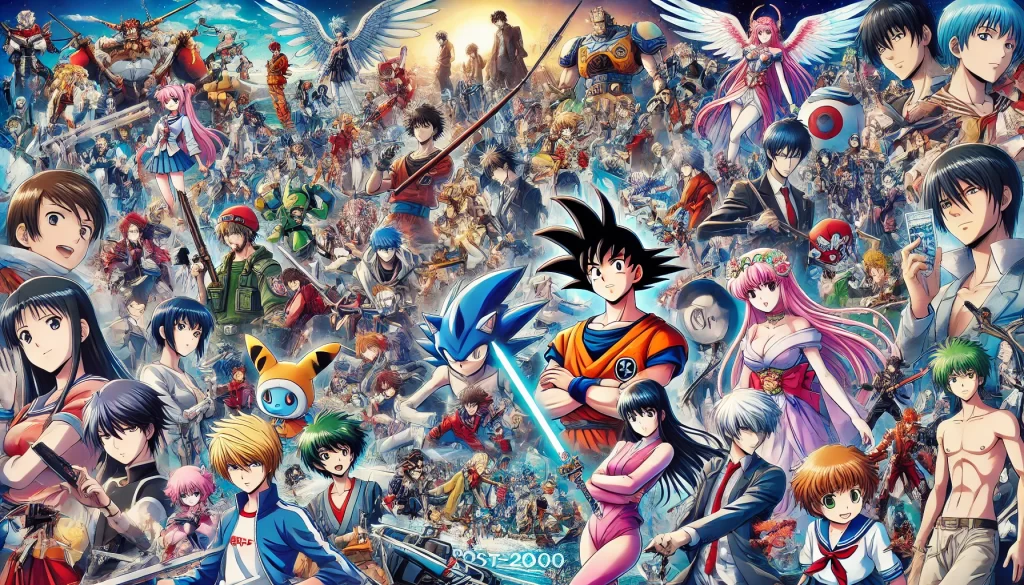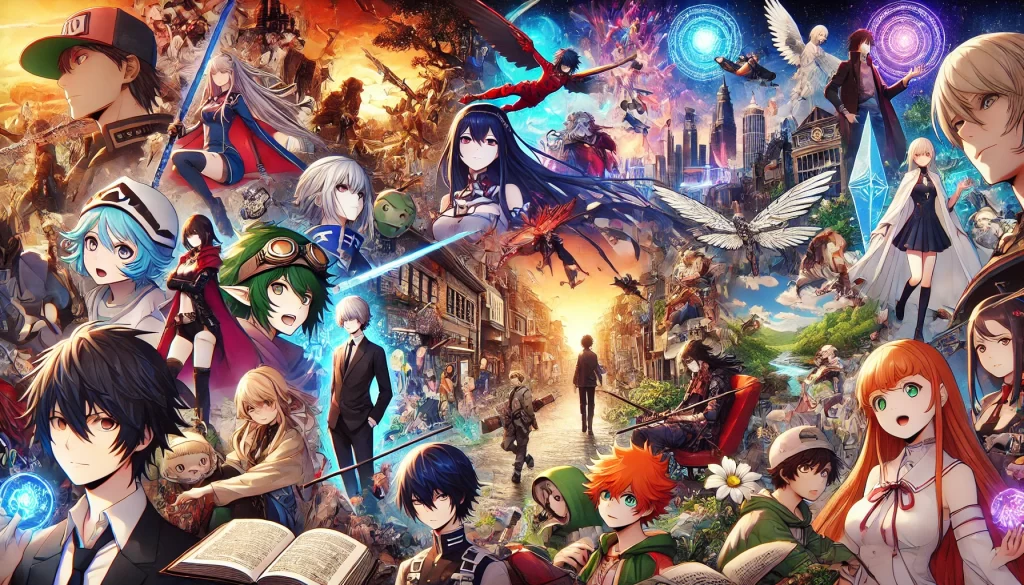
Japanese anime has undergone significant evolution since the turn of the millennium. From technological advancements to shifts in storytelling and global influence, anime has expanded its reach and impact on both domestic and international audiences. This article traces the journey of Japanese animation post-2000, highlighting key trends, influential series, and the broader cultural implications of this dynamic art form.
The New Millennium: Setting the Stage
Technological Advancements
Overview: The early 2000s saw a shift from traditional cel animation to digital techniques, transforming the anime production process.
Key Points:
- Digital Animation: Transition to digital animation allowed for more complex and vibrant visuals, enhancing the overall quality of anime.
- CGI Integration: The use of computer-generated imagery (CGI) became more prevalent, blending seamlessly with traditional animation.
Rise of Anime Studios
Overview: Several anime studios gained prominence, producing influential series that defined the era.
Key Studios:
- Studio Ghibli: Continued to release critically acclaimed films such as “Spirited Away” (2001) and “Howl’s Moving Castle” (2004).
- Madhouse: Known for series like “Death Note” (2006) and “One Punch Man” (2015).
- Kyoto Animation: Gained recognition for its detailed animation and heartfelt stories in series like “Clannad” (2007) and “K-On!” (2009).
Influential Anime Series Post-2000
Early 2000s Hits
Overview: The early 2000s produced several groundbreaking series that captured audiences’ imaginations.

Key Series:
- Naruto (2002): Follows the journey of Naruto Uzumaki, a young ninja with dreams of becoming the strongest ninja and leader of his village.
- Fullmetal Alchemist (2003) and Fullmetal Alchemist: Brotherhood (2009): Explores the story of two brothers using alchemy to search for the Philosopher’s Stone.
- Bleach (2004): Chronicles the adventures of Ichigo Kurosaki, a teenager with the ability to see ghosts who becomes a Soul Reaper.
Mid-2000s to Early 2010s
Overview: This period saw the rise of diverse genres and storytelling techniques, broadening the scope of anime.
Key Series:
- Death Note (2006): A psychological thriller about a high school student who gains a notebook that allows him to kill anyone by writing their name in it.
- Code Geass: Lelouch of the Rebellion (2006): Follows the story of a prince using a powerful ability to overthrow a tyrannical empire.
- Attack on Titan (2013): Depicts humanity’s struggle against giant humanoid creatures known as Titans.
Late 2010s to Present
Overview: Recent years have continued to push the boundaries of anime, introducing innovative storytelling and visuals.
Key Series:
- My Hero Academia (2016): Centers on a world where almost everyone has superpowers, following the journey of a young boy aspiring to be a hero.
- Demon Slayer: Kimetsu no Yaiba (2019): Tells the story of a young boy fighting demons to save his sister.
- Jujutsu Kaisen (2020): Follows a high school student who becomes involved in the world of jujutsu sorcery after ingesting a powerful cursed object.
The Impact of Anime on Global Culture
International Popularity
Overview: Anime’s global popularity has skyrocketed, becoming a significant part of international pop culture.
Key Points:
- Streaming Platforms: Services like Netflix, Crunchyroll, and Funimation have made anime more accessible to international audiences.
- Conventions and Fandom: Anime conventions, such as Anime Expo and Comic-Con, attract thousands of fans worldwide, celebrating anime culture.
Cross-Media Influence
Overview: Anime has influenced various other media, including video games, music, and fashion.
Key Points:
- Video Games: Many popular anime series have inspired successful video games, extending their narratives and engaging fans interactively.
- Music: Anime opening and ending themes have become popular hits, with artists gaining international recognition.
- Fashion: Anime-inspired fashion and merchandise have become mainstream, reflecting the genre’s cultural impact.
Cultural Exchange and Collaboration
Overview: Collaborations between Japanese and international creators have led to innovative projects and cultural exchange.
Key Points:
- Joint Productions: Co-productions between Japanese studios and Western companies have resulted in unique series blending different styles and storytelling methods.
- Influence on Western Animation: Anime’s distinctive aesthetics and narrative techniques have influenced Western animation, leading to a blend of styles.
Trends and Innovations in Modern Anime
Genre Diversification

Overview: Modern anime continues to explore a wide range of genres, catering to diverse audiences.
Key Points:
- Isekai: The “isekai” genre, involving characters transported to parallel worlds, has gained immense popularity with series like “Re” (2016) and “Sword Art Online” (2012).
- Slice of Life: Shows like “March Comes in Like a Lion” (2016) and “Laid-Back Camp” (2018) offer heartwarming, everyday stories.
- Psychological and Horror: Series like “Tokyo Ghoul” (2014) and “Paranoia Agent” (2004) delve into darker, more complex themes.
Technological Advancements
Overview: Advancements in technology continue to shape the production and consumption of anime.
Key Points:
- High-Definition and 4K: Improved visual quality enhances the viewing experience, making anime more visually stunning.
- Virtual Reality and Augmented Reality: VR and AR technologies are being explored to create immersive anime experiences.
Inclusivity and Representation
Overview: There is a growing focus on inclusivity and representation in anime, reflecting broader societal changes.
Key Points:
- Diverse Characters: Increasing representation of LGBTQ+ characters and diverse backgrounds.
- Social Themes: More anime addressing social issues, mental health, and personal struggles, offering deeper and more relatable stories.
The Future of Anime
The evolution of Japanese anime post-2000 showcases a dynamic and ever-changing art form that continues to captivate audiences worldwide. From technological advancements and genre diversification to the influence on global culture, anime has firmly established itself as a powerful medium of storytelling and artistic expression. As it continues to evolve, anime promises to offer even more innovative and compelling narratives, reflecting the complexities and beauty of the human experience. Whether you’re a long-time fan or a newcomer, the journey through the world of anime is an exciting and enriching adventure.
Keywords:
- Technological
- Digital
- Global
- Anime
- Inclusivity
- Advancements
- Influential
- Studios
- Streaming
- Cultural
